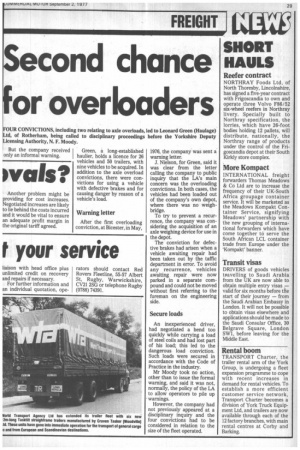Second chance for over loaders
Page 31

If you've noticed an error in this article please click here to report it so we can fix it.
FOUR CONVICTIONS, including two relating to axle overloads, led to Leonard Green (Haulage) Ltd, of Rotherham, being called to disciplinary proceedings before the Yorkshire Deputy Licensing Authority, N. F. Moody.
But the company received only an informal warning. Green, a long-established haulier, holds a licence for 26 vehicles and 50 trailers, with nine vehicles to be acquired. In addition to the axle overload convictions, there were convictions for using a vehicle with defective brakes and for causing danger by reason of a vehicle's load.
Warning letter
After the first overloading conviction, at Bicester, in May, 1976, the company was sent a warning letter.
J. Nielson, for Green, said it was clear from the letter calling the company to public inquiry that the LA's main concern was the overloading convictions. In both cases, the vehicles had been loaded out of the company's own depot, where there was no weighbridge.
To try to prevent a recurrence, the company was considering the acquisition of an axle weighing device for use in the depot.
The conviction for defec tive brakes had arisen when a vehicle awaiting repair had been taken out by the taffic department in error. To avoid any recurrence, vehicles awaiting repair were now parked in a separate com pound and could not be moved without first referring to the foreman on the engineering side.
Secure loads
An inexperienced driver, had negotiated a bend too quickly while carrying a load of steel coils and had lost part of his load; this led to the dangerous load conviction. Such loads were secured in accordance with the Code of Practice in the industry.
Mr Moody took no action, other than to issue the formal warning, and said it was not, normally, the policy of the LA to allow operators to pile up warnings.
However, the company had not previously appeared at a disciplinary inquiry and the four convictions had to be considered in relation to the size of the fleet operated.




































































































































